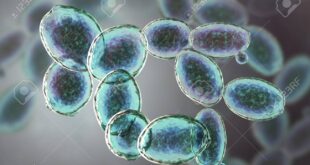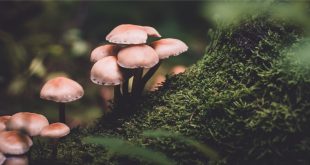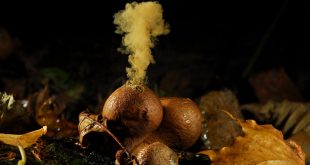This series includes the difference tables between
- Localized fungicide and Systematic fungicide
- Localized infection and Systematic infection
- Soil borne fungi and Seed borne fungi
- Eradication and Crop rotation
- Obligate parasite and Facultative parasite
- Plant quarantine and Crop rotation
- Nature culture medium and Synthetic culture medium
- Primary inoculum and Secondary inoculum
- Infection and Invasion
- Pathogenesis and Pathogenicity
- Symptom and Syndrome
Differences on diseases
- Stem rust of wheat and Leaf smut of wheat
- Wilt disease and Damping off disease
- Blight disease and Blast disease
- Penetration and Parasitism
- Powdery mildew and Rust
| Localized fungicide | Systematic fungicide |
| It is protective in nature. | It is therapeutic in nature. |
| Effective only in the plant area where it is applied. | Absorbed and systematically translocated by plants. |
| They are externally functioning. | They are internally functioning. |
| Restricted to a particular area. | Involves the whole plant. |
| It is an older type of fungicide. | It is not as old as protectants. |
| E.g. Copper fungicide and Bordeaux mixture. | E.g. Carboxin. |
| Localized infection | Systematic infection |
| Localized infection is one that affects only parts of the body such as stem, leaf, root etc. | Systematic infection is one that affects the entire body. |
| Protective in nature. | Therapeutic in nature. |
| They are externally functioning. | They are internally functioning. |
| In this case the pathogen is limited in the sight of infection. | In this case the pathogen is carried to other part of the host. |
| Example: Tikka disease of ground nut. | Example: Rust, smut etc. |
| Soil borne fungi | Seed borne fungi |
| Associated with soil. | Associated with seed externally or internally. |
| Dormant structure such as thickened hyphae and sclerotia are present. | Dormant mycelium is present under seed coat or in the embryo (internal seed borne fungi). |
| Dormant spores (conidia, chlamydospore, oospore etc) are present in the soil. | Dormant spores are present on seed coat (external seed borne fungi). |
| Depending on soil pH, moisture or other microorganisms of soil. | Are not dependent on these. |
| E.g. Fusarium, Pythium and Rhizoctonia sp. etc. | E.g. Diplodia pinea, Lasiodiplodia theobromae, Sirococcus conigenus etc. |
| Eradication | Crop rotation |
| Eradication is the reduction of an infectious diseases prevalence in the global host population to zero. | Crop rotation is the practise of growing a series of dissimilar or different types of crops in the same area in sequenced seasons. |
| It works against both soil and seed borne fungi. | It works against soil borne pathogen. |
| It does not help in reducing soil erosion and also does not increase soil fertility and crop yield. | It helps in reducing soil erosion and increases soil fertility and crop yield. |
| It does not increase diversity. | It helps to increase diversity. |
| Successfully eradicated two diseases: Human smallpox, rinder pest. | This method is followed for many crops such as legumes , root vegetables, leafy green vegetables etc. |
| Inocula | Inoculation |
| Any part of the pathogen that can cause infection. | Inoculation is the coming in contact of a pathogen with a plant. |
| Inocula is the part of organism or the whole cell of organism. | Inoculation is the process proceed by inocula. |
| Inocula causes the disease in the host cell. | Inoculation is one of the methods of the stages of the disease cycle. |
Inocula can be of two types –
|
There are two steps involves in the inoculation process –
|
| Obligate parasite | Facultative parasite |
| They can’t complete their life cycle without the presence of host cell. | They can complete their life cycle independent of their host. |
| They do not kill host tissue. | They kill host tissue that they invade. |
| They are host specific. | They are not host specific. |
| They don’t secrete toxic substances on host cell. | They can secrete toxic substances to their host. |
| They are comparatively advanced from evolutionary point of view. | They are primitive form evolutionary point of view. |
| E.g. Puccinia graminis-tritici, Ustilago hordei, Erysiphe sp. | Example: Cercospora, Alternaria, Colletotrichum, Macrophomina etc. |
| Plant quarantine | Crop rotation |
| Plant quarantine includes the regulations of the movement of living plant or plant products between politically defined territories. | Crop rotation is the practise of growing a series of dissimilar or different types of crops in the same area in sequenced seasons. |
| It is not as old as crop rotation. | It is one of the most oldest methods. |
| It is one kind of regulatory method of controlling plant diseases. | It is one kind of cultural method of controlling plant diseases. |
| It follows some strict rules and regulations. | This method have no specific rules and regulations. |
| Three important aspects of crop rotations are: 1. Inspection 2. Certificatin 3. Embargo. |
Three important aspects of crop rotation are: 1. Reducing soil erosion. 2. Augmenting soil fertility. 3. Increasing soil diversity. |
| Natural culture medium | Synthetic culture medium |
| Natural media are composed of chemically undefined compounds. | Synthetic media are composed of chemically defined compounds. |
| It consists solely of a naturally occurring biological fluids. | Synthetic media are prepared by adding nutrients (both organic and inorganic). |
| The chemical composition of a natural medium is not properly known. | The chemical composition of a synthetic medium is completely known. |
| It is less expensive. | It is more expensive. |
| The reproducibility rate, in case of natural media is poor or not satisfactory. | The reproducibility rate is comparatively high. |
| It can be of three types: 1. Biological fluid containing media. 2. Tissue extracts controlling media. 3. Clot media. |
It can be of four types: 1. Serum containing media. 2. Serum free media. 3. Chemically defined media. 4. Protein free media. |
| Prepared for most common routine test. | Prepared for special study. |
| Example: Vegetable extract, fluid juice. | Example: Peptone martite agar medium. |
| Primary inoculum | Secondary inoculum |
| An inoculum that survives dormant in the winter or summer and causes the original infection in the spring or autumn is called primary inoculum. | An inoculum produced from primary infection is called secondary inoculum. |
| It develops from the perenating organ or comes from the neighbouring field. | It develops after the functioning of primary inoculation. |
| Primary inoculum causes primary infection. | Secondary inoculum causes secondary infection. |
| Primary inoculum starts the diseases. | Secondary inoculum spreads the disease. |
| Example: Overwintering or oversummering pathogen or its spores that cause primary infection.
In Puccinia, the urediospore is the primary inoculum. |
Example: Inoculum produced by infection take place during the same growing season.
In Puccinia, aeciospore is the secondary inoculum. |
| Infection | Invasion |
| Infection is the process by which pathogen establish contact with the susceptible cells and tissues of the host and procure nutrients from it. | Spreading of the pathogen into the host tissue is known as invasion. |
| Infection initiates invasion. | Invasion is the process that starts after infection. |
| Types of infection regulate invasion process. | It is a substage of infection. |
Infection can be of two types:
|
Invasion can be localized or systematic. |
| Example: The contact of Phytophthora infestans with Potato leaf. | Example: The attack of Malaria parasite from red blood cell to liver. |
| Pathogenesis | Pathogenicity |
| Manner of development of a disease. | The ability of microbe to cause disease. |
| It describe the events leading to certain disease. | It describes the ability of pathogen responsible for certain disease. |
It depends on
|
It depends on
|
| The term is often used to describe the state of combined effects of disease development. | This term is often used to describe or compare species. |
| Example: By the series of events bacteria cause infection is called bacterial pathogenesis. | Example: Measles, Chickenpox has high pathogenicity. Polio, Tuberculosis, Hepatitis A has low pathogenicity. |
| Symptom | Syndrome |
| Particular subjective complaint noted by the person with a certain disorder. | A collection of clinical signs, symptoms and data. |
| Symptom actually indicates an effect of an illness. | Syndrome is a group of symptoms that all happen at the same time that indicate a specific cause. |
| It refers to an observable behavior or state. | The next higher level of analysis. |
| In pathology symptom serves as an indication of particular disease, a phenomenon that arises from and accompanies that particular disease. | In pathology syndrome is characterized as particular illness that is the outcome of many certain symptom. |
| Example: Pale yellow leaf spots is one symptom of powdery mildew. | Example: The signs of Down syndrome are a large tongue, a small chin, a flat nose. |
Differences on diseases
- Stem rust of wheat and Leaf smut of wheat
- Wilt disease and Damping off disease
- Blight disease and Blast disease
- Penetration and Parasitism
- Powdery mildew and Rust
See the characteristics of the disease and make differences accordingly.
| Stem rust of wheat | Leaf smut of wheat |
| Causal agent: Puccinia graminis- tritici. | Causal agent: Ustilago tritici |
| Infection occur on stem and damages it. | Infection occurs in the whole grain of the ear and the grains are transformed into a powdery grain. |
| They form lesions in the form of pustules on stems, usually rusty in color. | They form black dusty spore masses that resemble soot or smut in the ear. |
| Disease is caused by teleutospore/ teliospores. | Disease is caused by chlamydospores. |
| Each teliospore has long stalk and two terminal cells. | Spores are spherical to oval in shape. |
| Wilt disease | Damping off disease |
| A wilt disease is any number of diseases that affect the vascular system of plants. | Damping off is a horticultural disease or condition, caused by several different pathogens. |
| Usually it is a secondary symptom in which leaces or shoots lose their turgidity and droop. | The rapid death and collapse of very young seedlings in the seed bed or field. |
| Pathogens that cause wilting diseases invade the vascular vessels and cause the xylem to fail to transport water to the foliage, thus causing wilting of stems and leaves. | In this case the pathogen kill or weaken seeds or seedlings before or after they germinate. For this disease destruction of seedlings near the soil lini occurs. |
| Causal agent: Fusarium oxysporum, Bretziella fagacearum etc. | Causal agent: Alternaria, Phyllosticta, Pythium etc. |
| Host: Musa sp., Capsicum sp etc | Host: Zea mays, Pinus elliottii etc. |
| Blight disease | Blast disease |
| Blight, any of various plant diseases whose symptoms include sudden and severe yellowing, browning, spotting, withering, or dying of leaves, flowers, fruit, stems, or the entire plant. | Blast disease, also known as rice rotten neck and is the most damaging of all the fungal diseases in Southern Africa. |
| Causal agent: Rhizoctina solani – Sheath blight of rice. | Causal agent: Pyricularia oryzae – blast disease of rice. |
| Causal agent generally attack the shoots and other young, rapidly growing tissues of a plant. | Main infection occur in leaves, spindle shaped infection with a brown spot. |
| Mycelia present , the mycelium is most active. | Condiophore and conidia present. Conidia hyaline. |
| Penetration | Parasitism |
| The initial process of entrance of the pathogen into the host tissue is known as penetration. | Parasitism is a symbiotic relationship between species, where one organism, the parasite, lives on or inside another organism, the host, causing it some harm, and is adapted structurally to this way of life |
| It is the 1st step in the contact of the inoculum with the host. | It is the term used to describe established relationship between host and pathogen. |
There are two types of penetration depending upon the entry of the pathogen –
|
There are different types of parasitism –
|
| Through penetration parasite establishes certain type of parasitism. | To establish parasitism it is not always require penetration. |
| Powdery mildew | Rust |
| White powdery bloom on the plant surface. | Early on, look for white, slightly raised spots on the undersides of leaves and on the stems. After a short period of time, these spots become covered with reddish-orange spore masses. Later, leaf postules may turn yellow-green and eventually black. |
| Powdery mildew diseases are caused by many different species of fungi in the order Erysiphales. | There are more than 5,000 known species of rust on plants. Common rust (Phragmidium spp.) is a fungal disease that attacks roses, hollyhocks, snapdragons, daylilies, beans, tomatoes and lawns. |
| Powdery mildew grows well in environments with high humidity and moderate temperatures. Greenhouses provide an ideal moist, temperate environment for the spread of the disease. | Rust diseases are favored by 4 to 8 hours of low light intensity, warm temperatures and moisture — humidity, dew or rain — followed by 8 to 16 hours of high light intensity, high temperatures and slow drying of leaf surfaces. |
| The pathogen can be controlled using chemical methods, bio organic methods, and genetic resistance. | Copper sprays or Sulfur powders ( chemical method ), organic fertilizer can be used to control disease. Crop rotation can be of great help. |
References & Other Links
- Wilt disease from Wikipedia.
- Damping off from Wikipedia.
- Parasitism from Wikipedia.
- Rust from Planet Natural Research Center.
- Powdery mildew from Wikipedia.
Revised by
- Somudro Mahbub Nasir on 8 July, 2021
 Plantlet The Blogging Platform of Department of Botany, University of Dhaka
Plantlet The Blogging Platform of Department of Botany, University of Dhaka






There are some differences you didn’t give here.If it is added here, it will be very beneficial for the students who need it.
We are working on it.
We will notify you as soon as it is completed.
Thanks for your concern.
It was helpful. Thank you.